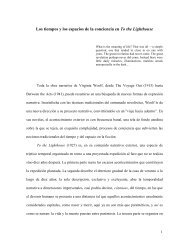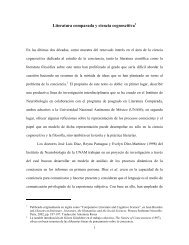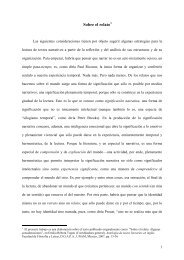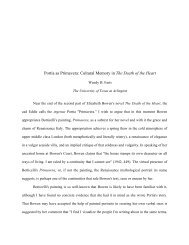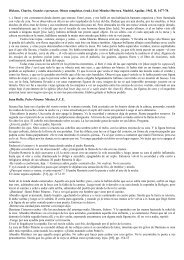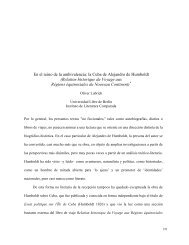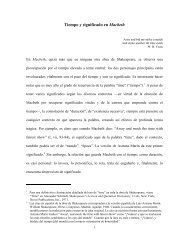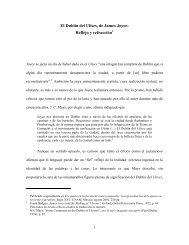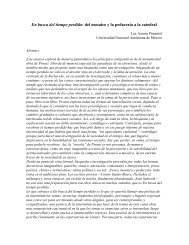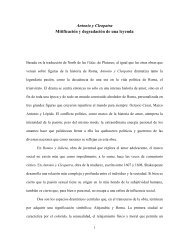Risa y penitencia - Luz Aurora Pimentel
Risa y penitencia - Luz Aurora Pimentel
Risa y penitencia - Luz Aurora Pimentel
- No tags were found...
You also want an ePaper? Increase the reach of your titles
YUMPU automatically turns print PDFs into web optimized ePapers that Google loves.
east of heaven, pillar of smoke making a gash in the cloud’s heart; my nameis sea shell and wind maze, whirlwind and crossroads; my name is knot ofsnakes, sheaf of centuries, the meeting and the scattering points of the fourcolours and the four ages; my name is night and I spark like flint; my name isday and, like eagles, I pluck out the eyes; my name is jaguar and my name is earof corn. Each mask, a name; each name, a date. My name is time and I shake aclay rattle with seven seeds in it. (130-131)The first thing that strikes the reader is the syntactic arrangement of the initialdescription; the appearance of the descriptive topic—the little head—is deferred, almostteasingly to the last position in the sentence, after all sorts of attributes and circumstantialpredicates. This final position stresses her disembodied state, but, most of all, the strength ofher laughter bursting after so much containment. And yet, the little head is not described as anisolated object but as part of a spatial context that includes the fictional presence of the poet.The description is informed by strong symbolic values that already set the ideologicaldirection of the ideas contained in the essay: on the one hand, the little head’s intimate,complicitous relationship with the sun—itself described and personified in the ideologicalsphere of the prehispanic cosmology—a metonymic relationship that will then be affirmed inall its metaphoric identity: in the end the disembodied little head and the “beheaded sun”become one; on the other hand, the very spatial location of the little head is symbolic of thedesire to incorporate other cultures, other times (“My name is time”, “my name is… sheaf ofcenturies”), for she has been placed between the language of the Other and its works: betweena Spanish dictionary that goes back to the origin of words and a minor classic of Spanishliterature. The little head is explicitly described as a fragment, yet her vocation for wholeness,for integrity is already apparent in this initial phase of the ekphrasis.At this point, her spatial location not only unifies cultures but faces the poet as amirror of laughter in which he would like to see his image, to identify, but finds himselfsorely wanting; his laughter is harsh “like pebbles falling into a well”. Gradually as thedescription evolves, the poet works imaginatively to restore the fragment to unity, not only to



